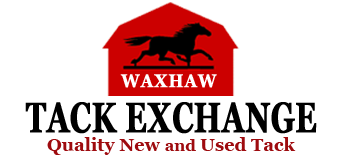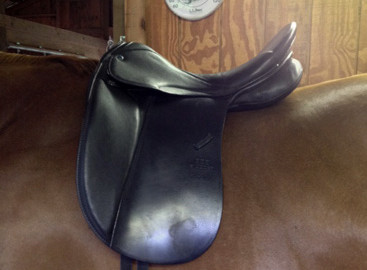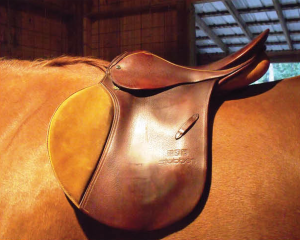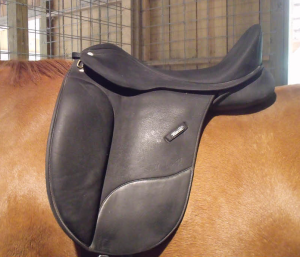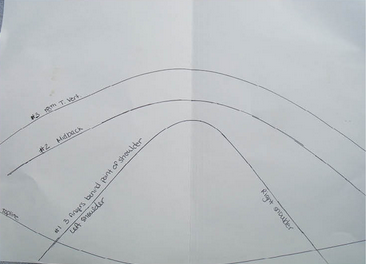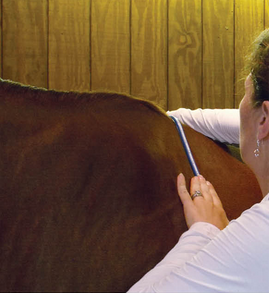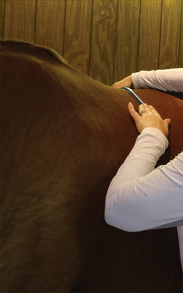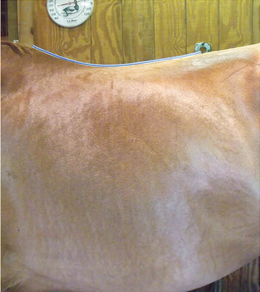The Basics of Saddle Fitting – Part 2
The Basics of Saddle Fitting – Part 2
Finding the Right Saddle for You and Your Horse
by Caitlin WaufleAs we continue our saddle search from the Fall issue, it is now time to try some saddles on your horse. Take your drawings to your local tack shop, or make an appointment with a saddle fitter, and pick up as many saddles in the correct tree size and seat size for and your discipline.
Start trying them on your horse following these important guidelines:
1. Observe the balance of the saddle from front to back. The sweet spot for the rider should be approximately halfway between the pommel and the cantle.
2. Make sure the panel is making contact with the horse’s back all the way from front to back and does not bridge anywhere. The panel needs to distribute your weight evenly, so if the contact is lighter in one area than another, it cannot effectively distribute your weight.
3. Make sure there is adequate clearance above your horse’s spine to avoid concussion on the spine. There should never be less than 2 fingers clearance when girthed and mounted on the horse.
4. Assess the length of the panel on the horse’s back and make sure that it does not extend pass the horse’s 18th thoracic vertebrae.
They say a picture is worth a thousand words, so shown here are samples of each type of saddle discussed in the first part of the article series: close contact / jumping saddle, an all purpose saddle, and a dressage saddle.
As you can see from the pictures, the close contact / jumping saddle is too wide and the balance is too forward. This will cause the rider to be pitched forward and will cause the horse discomfort due to inadequate wither clearance and improper distribution of the rider’s weight beneath the tree points.
In the photo of the all purpose saddle, you can see that the saddle is too narrow and the balance of the saddle is too far back. This will cause the rider to be pitched too far back and cause the horse discomfort due to too little spinal clearance beneath the cantle and distribution of the rider’s weight beneath the cantle. Also, when the angle of the tree point is too narrow, they dig into the horse’s muscle and cause extreme discomfort. I often liken this feeling for the horse as if you wore shoes that are too small for your feet and then being asked to jog around the block.
The last picture shows a dressage saddle fitting the horse well. The balance of the seat is halfway between the pommel and cantle which allow the rider to seat balanced in their tack. The clearance above the horse’s spine is perfect and the weight distribution on the panel is great. This allows the rider’s weight to be spread across the largest bearing surface.
After all the guidelines have passed inspection, girth your horse and go through these steps once more. How will you know if the horse likes the saddle? While he is not going to talk like Mr. Ed, your horse will communicate his like and dislike of saddles. All of us have seen horses buck upon picking up the canter or go around the ring head straight up in the air and tension written all over their face. These horses are communicating discomfort. Look for signs of relaxation like stretching, chewing / licking the lips, and tracking up at the walk, trot, and canter to communicate a preference for a particular saddle. If your horse exhibits tension, swishing of tail, and kicking out it is time to move on to the next saddle. Trust your horse, he will tell you if he is uncomfortable in his tack. So, if all is going well on your horse’s front, how do you like the saddle? Is it comfortable in the seat and does it place your leg in an effective position? I recommend recording both your horse’s and your own reaction to each saddle so that you can compare them to make the most educated decision about which saddle to choose.
Hopefully these steps will help you on your way to finding the right saddle that works for both you and your horse. If you need more assistance, I recommend getting a saddle fitter to come and assess your situation and help you get the best saddle for you and your horse.
This article was initially featured in the Winter 2014 Issue of The Waxhaw Equestrian Magazine and is posted on our website with prior permission.
